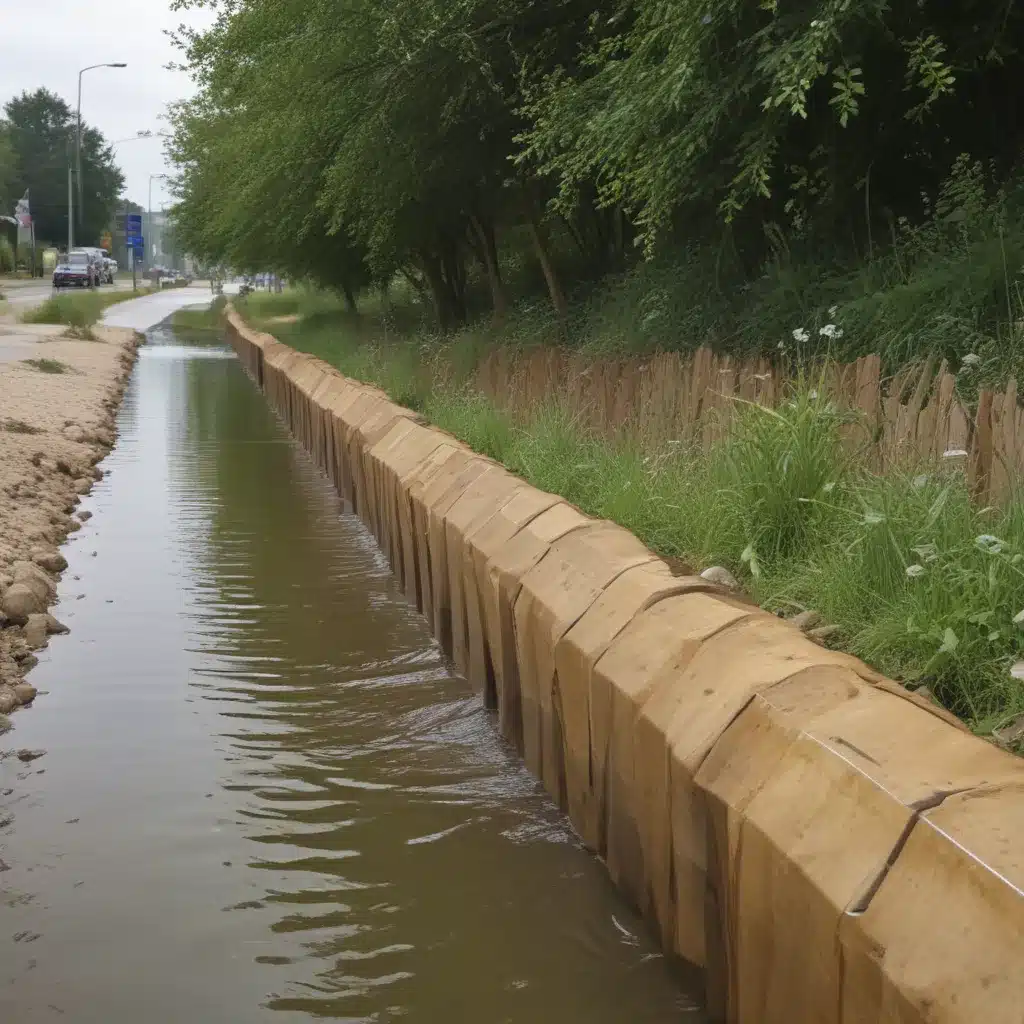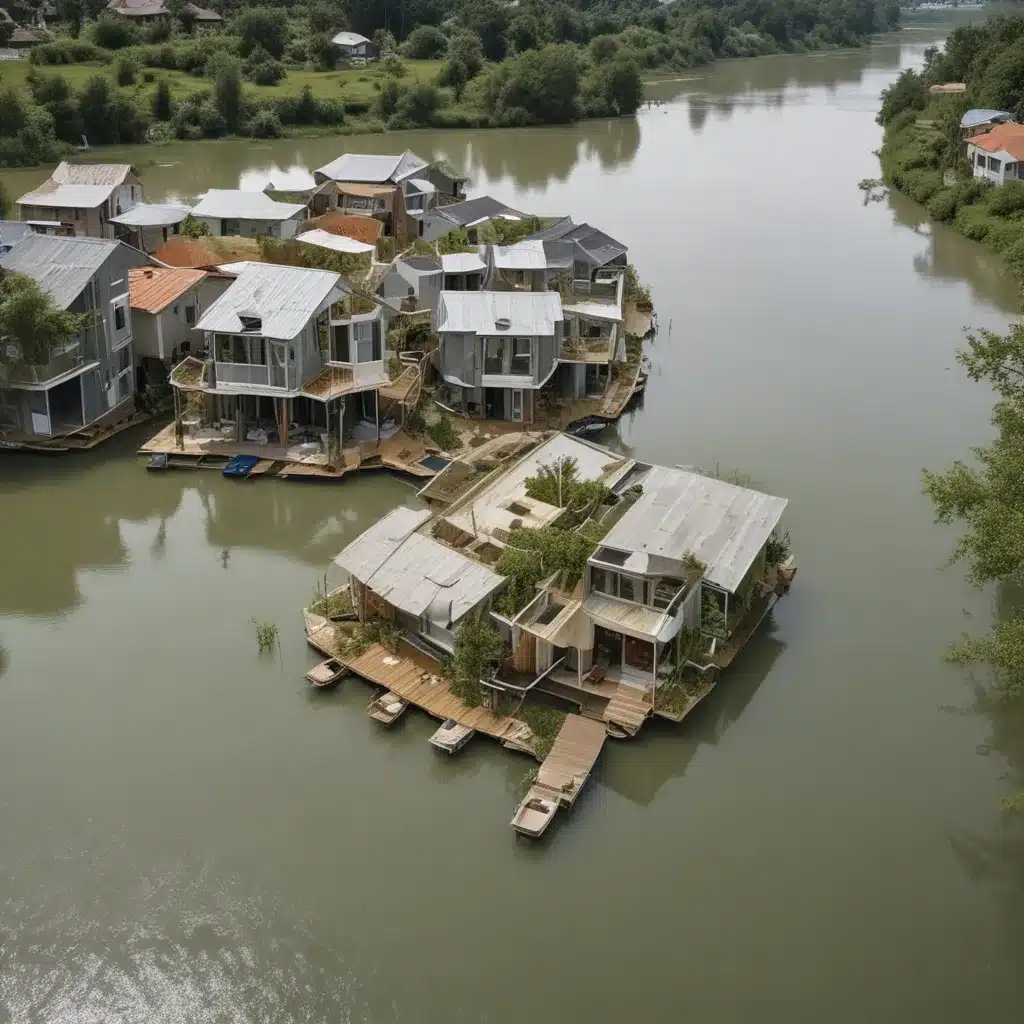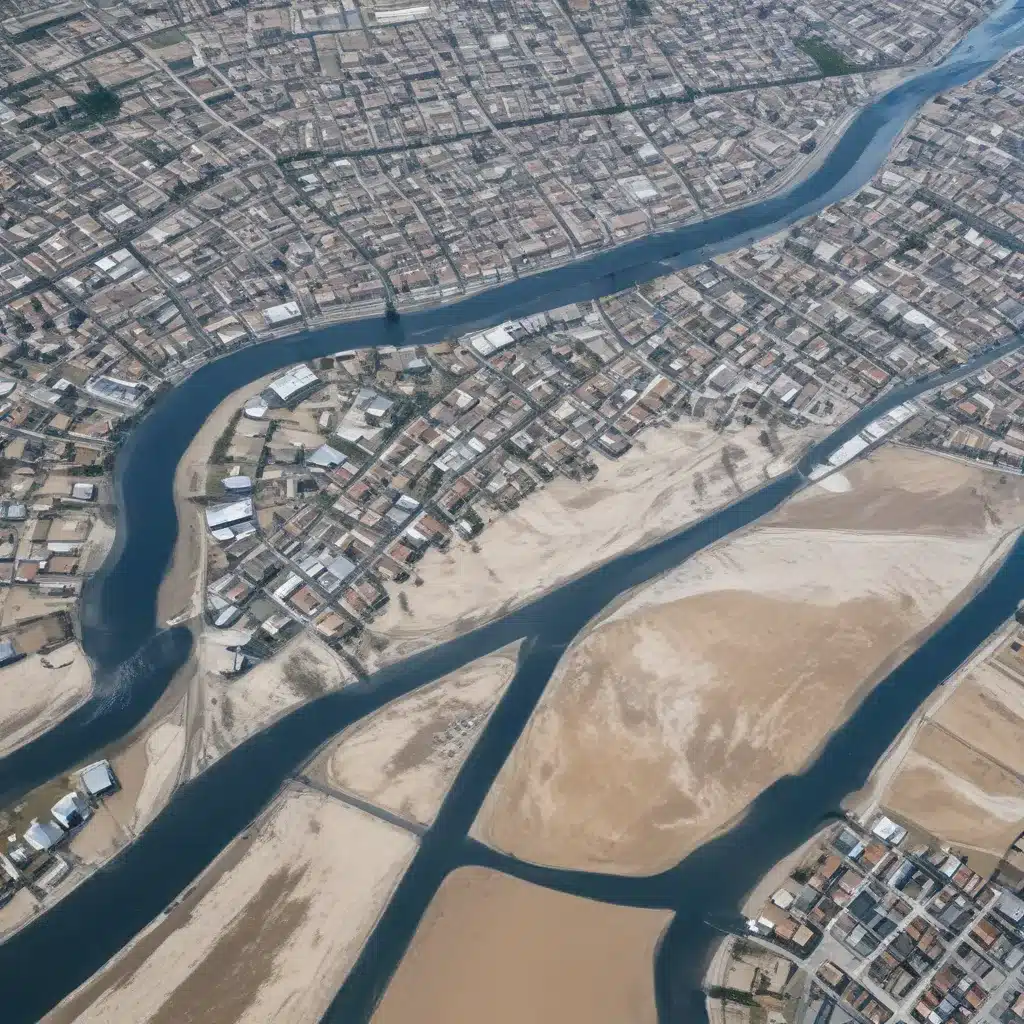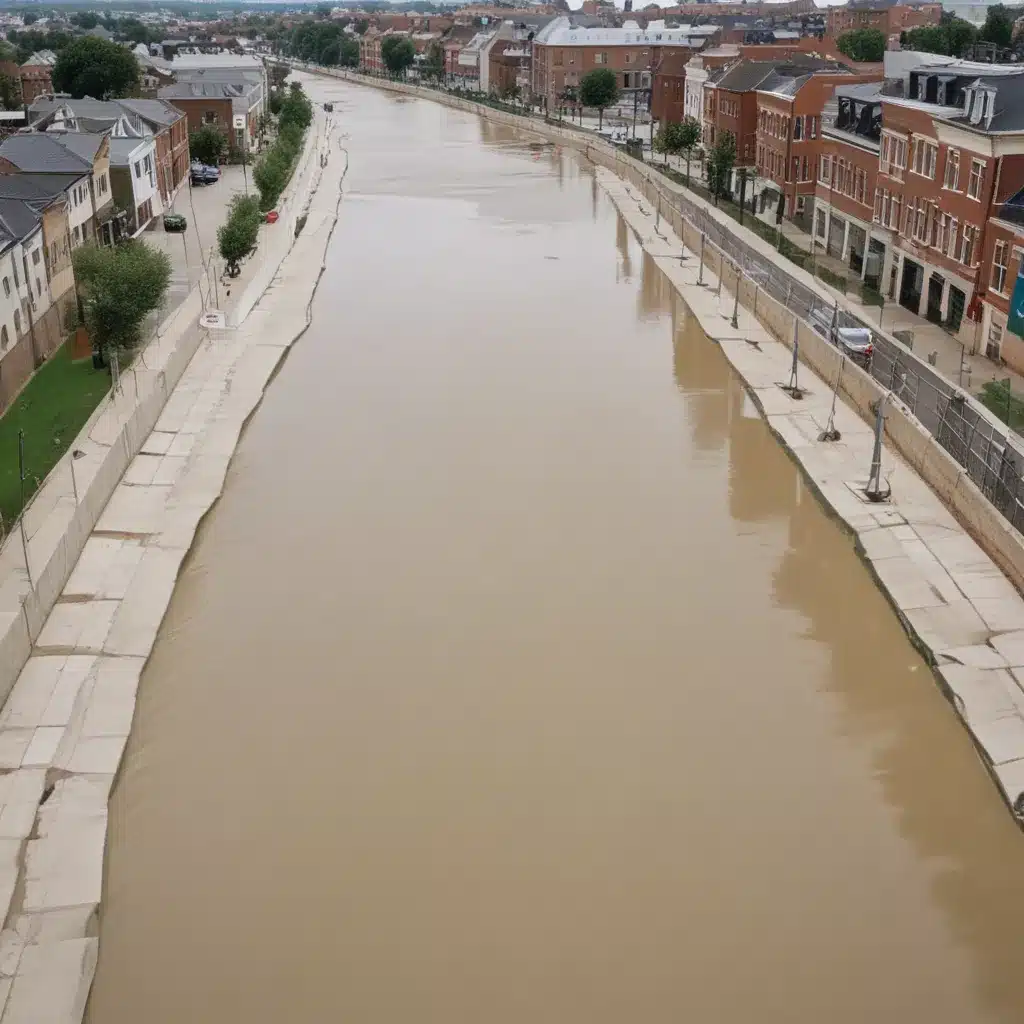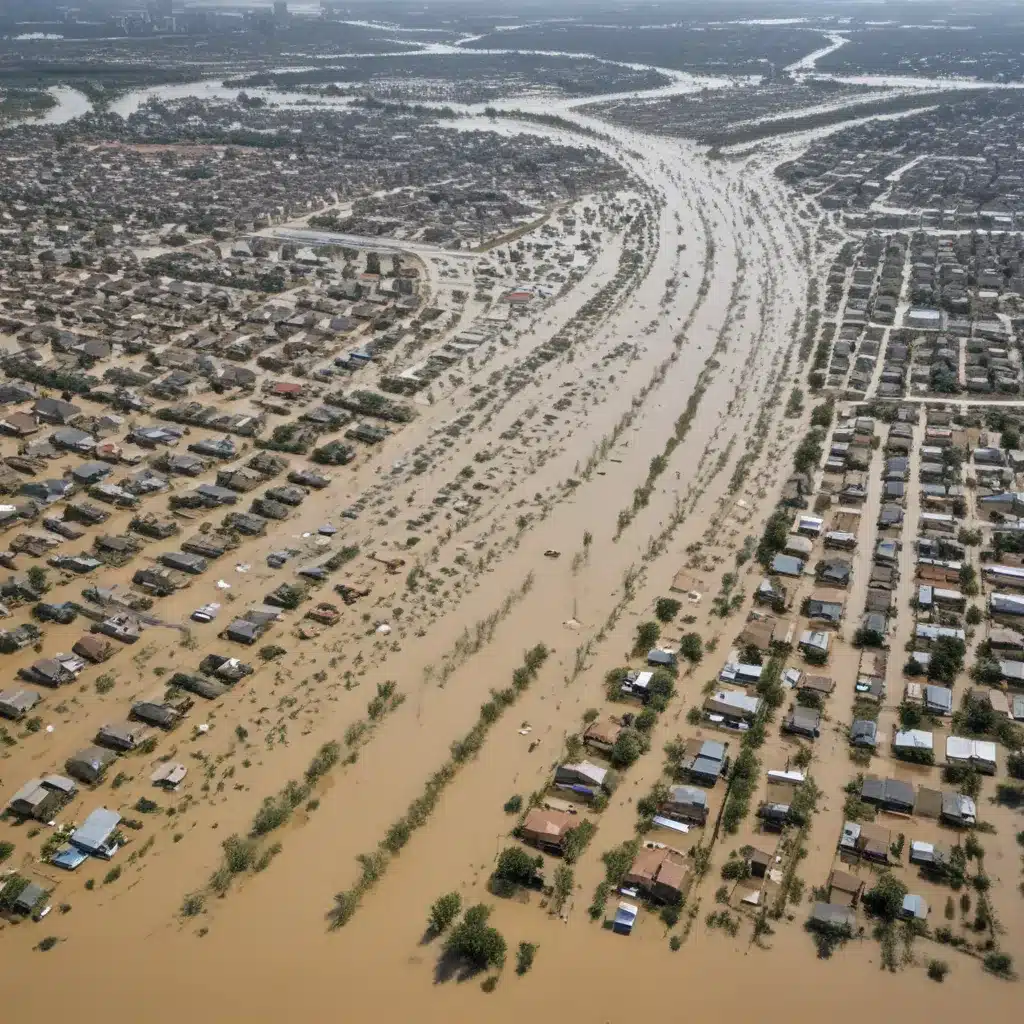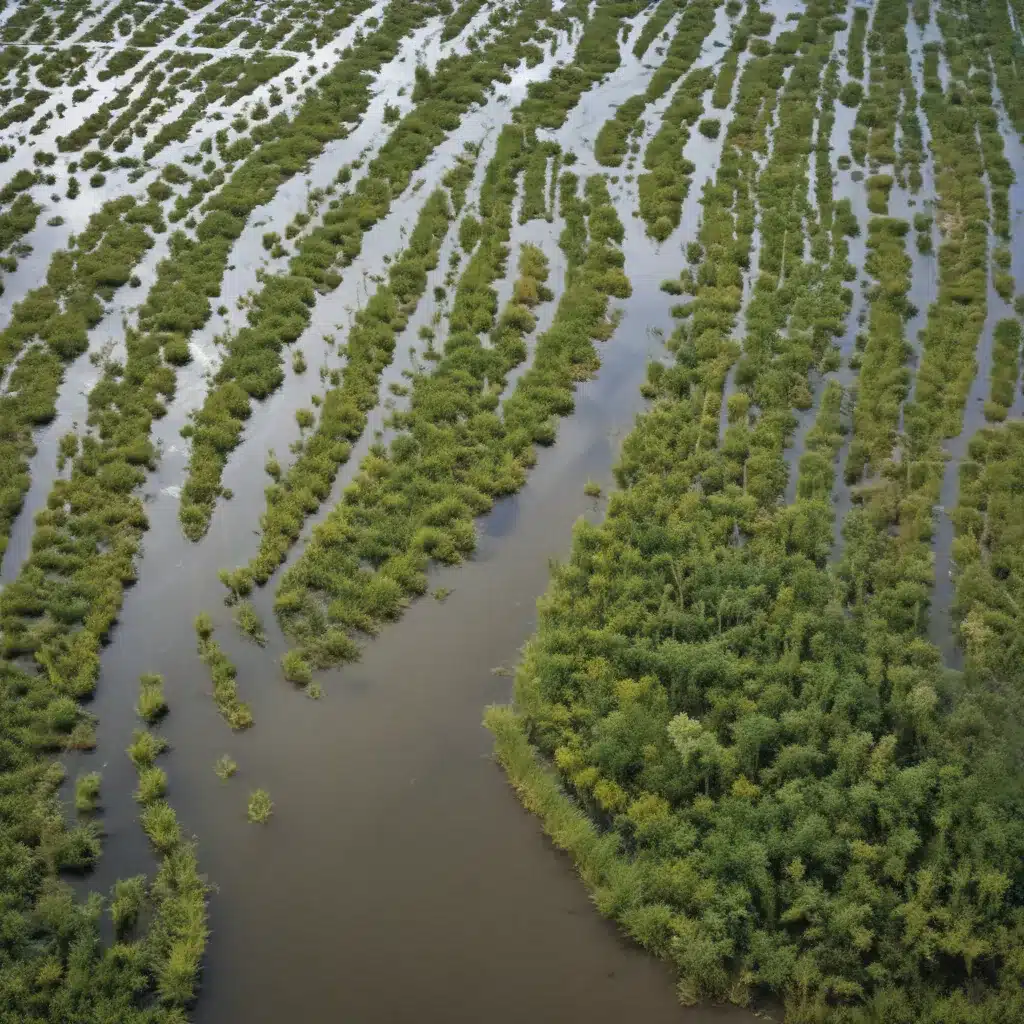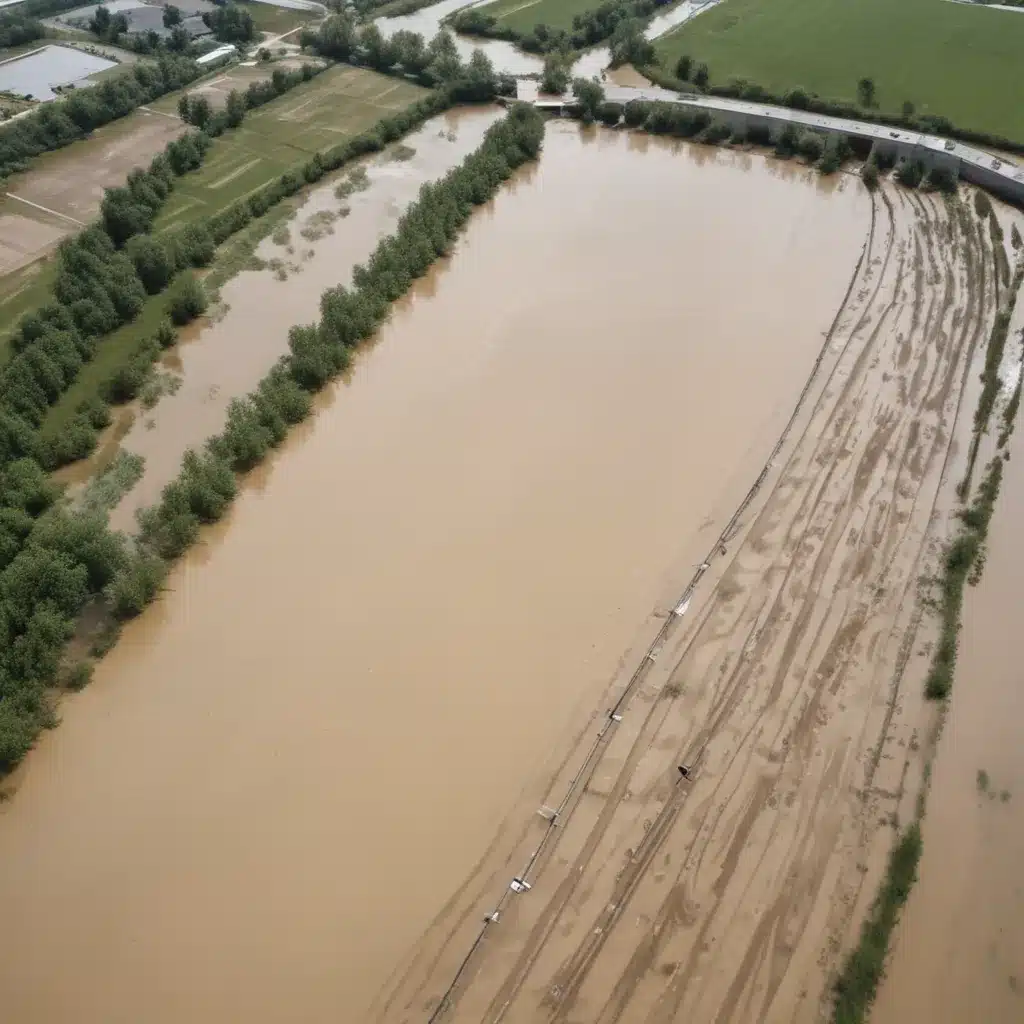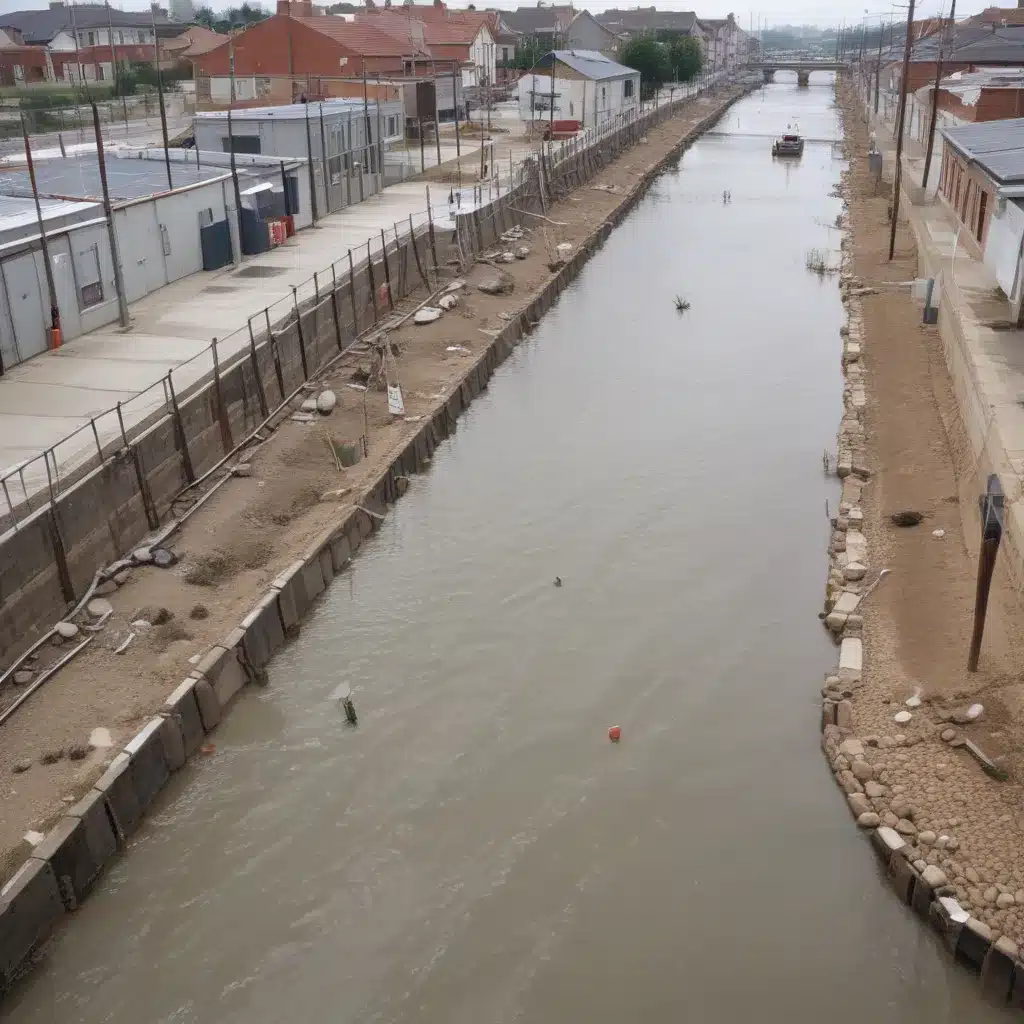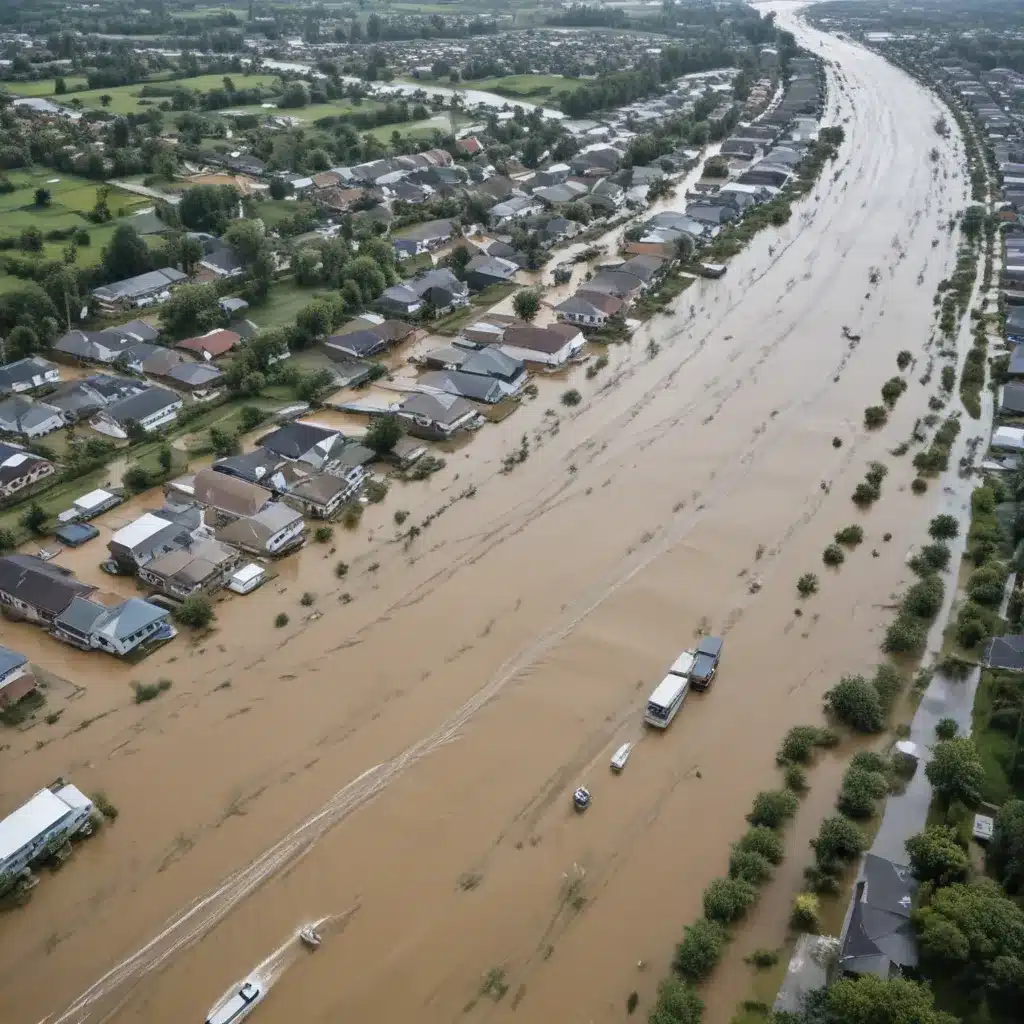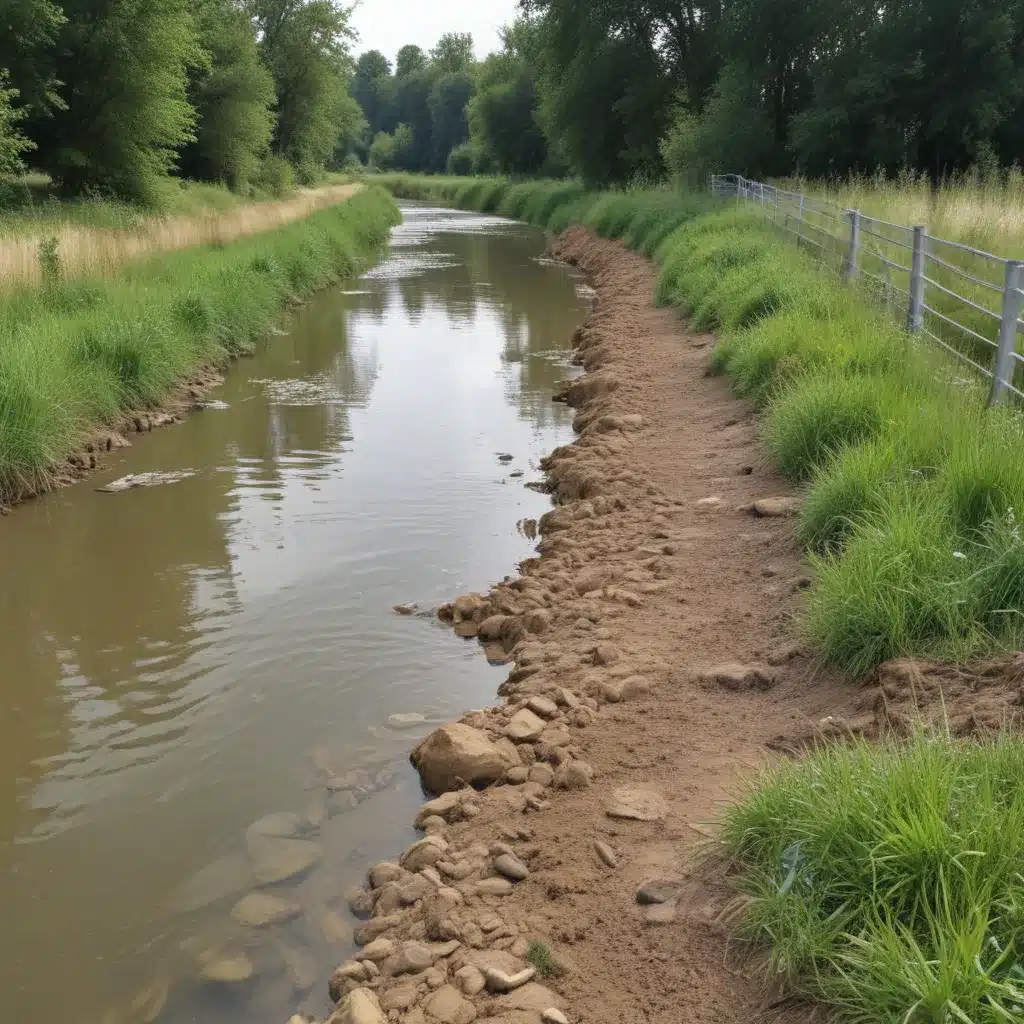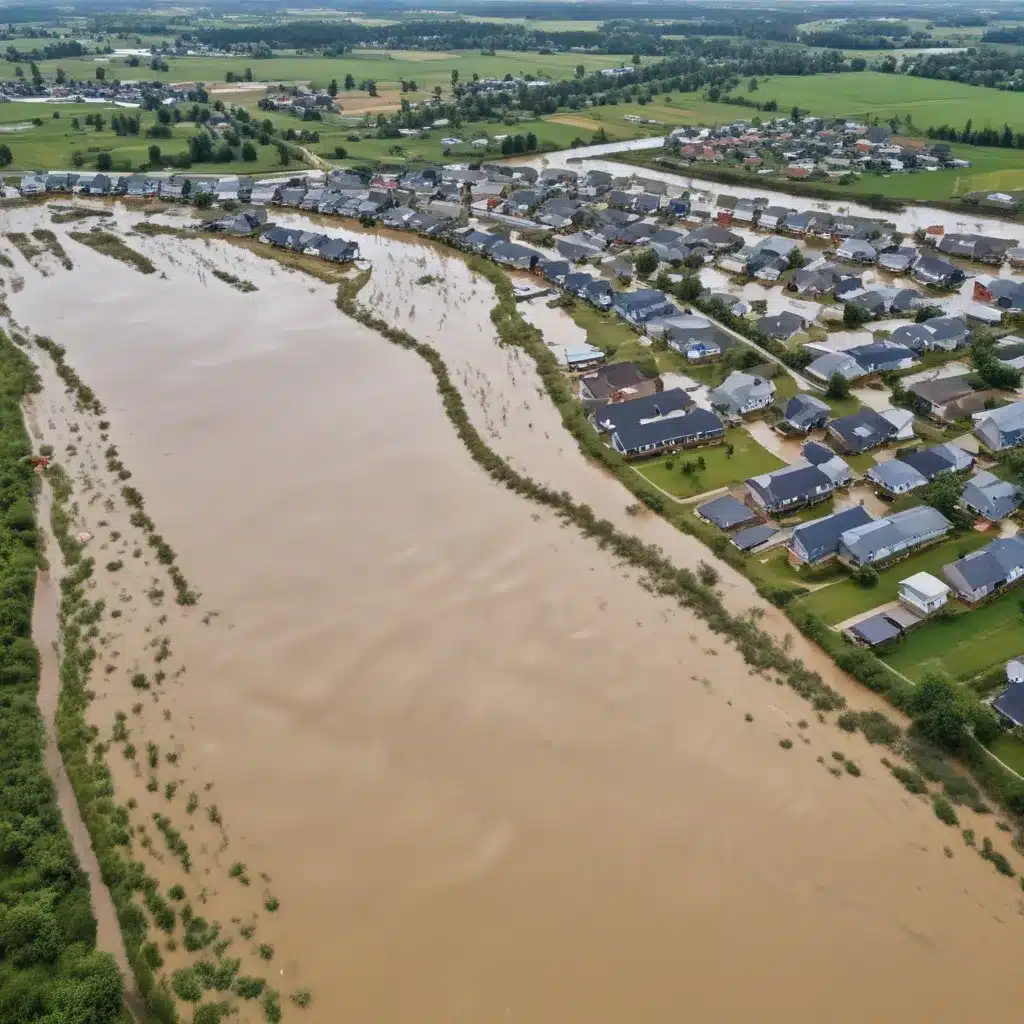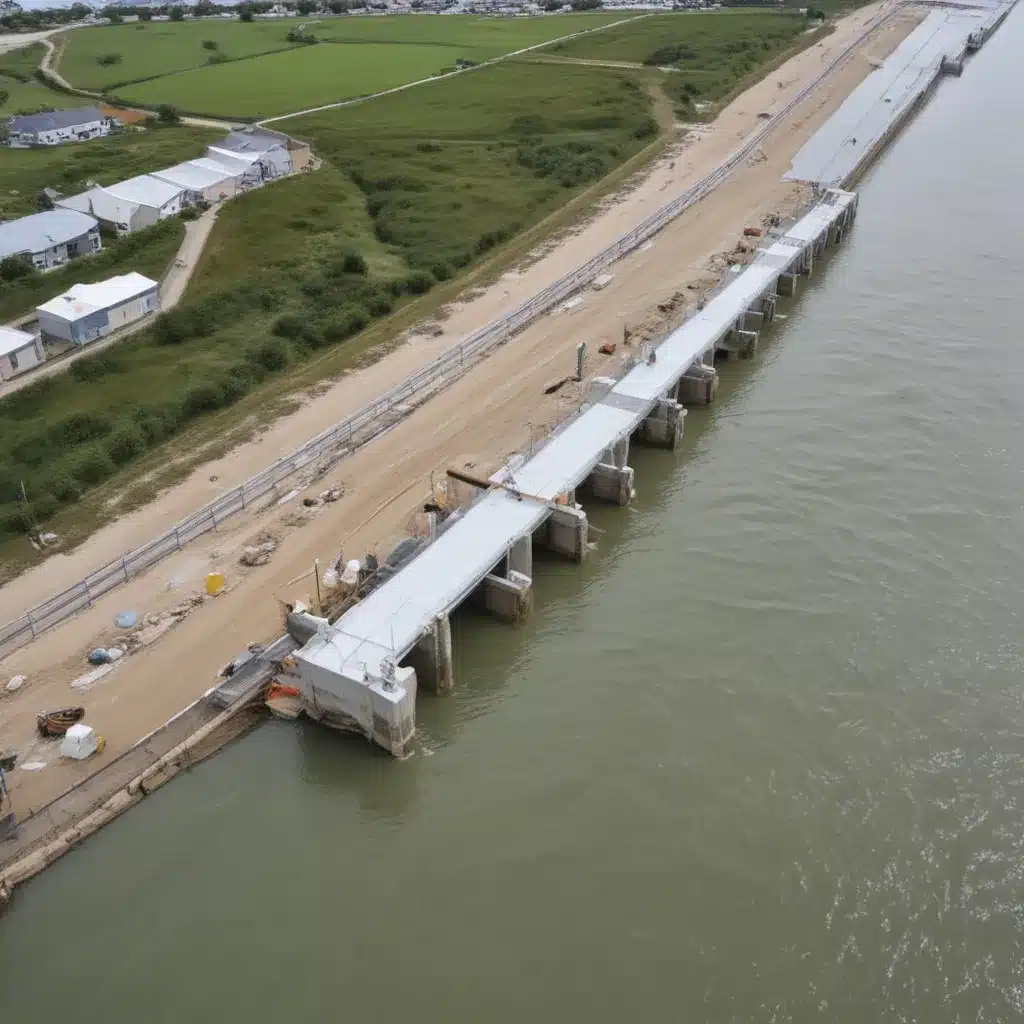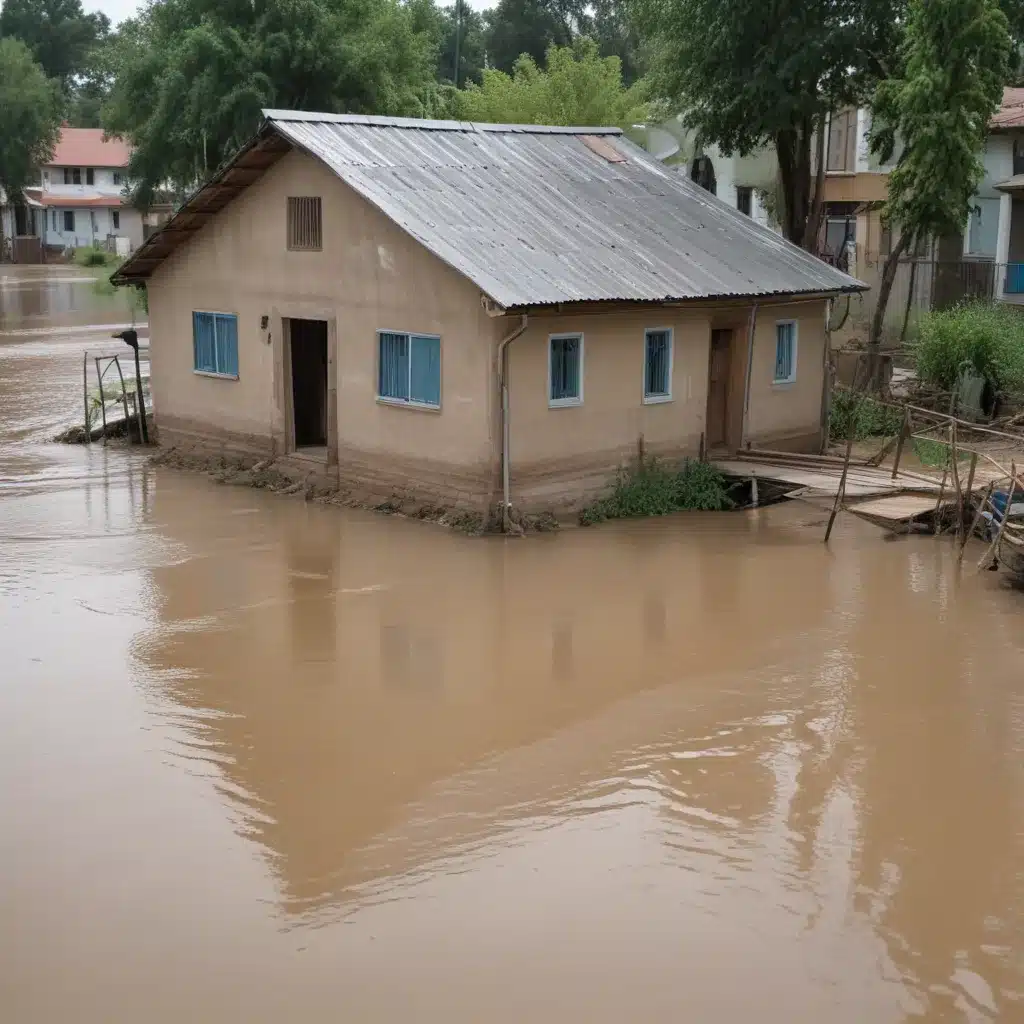Imagine a city transformed, where concrete landscapes give way to vibrant green spaces teeming with life. Picture a future where the threat of devastating floods is mitigated by innovative solutions that work harmoniously with nature. In this discussion, we will explore the world of green infrastructure and its potential to revolutionize flood management. From green roofs and rain gardens to permeable pavements and bioswales, we will uncover the myriad of possibilities that exist to create a more resilient and sustainable urban environment. Join us as we embark on a journey towards a greener, safer future.
Key Takeaways
- Green infrastructure solutions such as green roofs, rain gardens, permeable pavements, bioswales, and vegetated swales can effectively mitigate floods by managing stormwater runoff, reducing flooding risk, improving water quality, and enhancing urban aesthetics.
- Design considerations for swales include slope, vegetation type, soil composition, and stormwater capture and infiltration rate, which all influence their effectiveness in capturing and infiltrating stormwater runoff.
- Detention basins, when designed properly, can serve as aesthetically pleasing green spaces while optimizing water storage and flow control, managing water quality, and promoting community engagement for long-term sustainability.
- Floodplain restoration, wetland creation, urban tree canopy, riparian buffers, and natural floodplain storage all contribute to flood mitigation by protecting vulnerable areas, reducing flood risk, improving water quality, providing ecosystem services, and balancing protection and development.
Green Roofs
Green roofs provide an innovative solution for mitigating flooding by utilizing living vegetation to absorb and retain rainwater. These sustainable rooftops are designed to capture and manage stormwater, offering a range of benefits for urban areas. With the increasing frequency and intensity of heavy rainfall events, green roofs play a crucial role in stormwater harvesting and flood prevention.
One of the key advantages of green roofs is their ability to absorb rainwater. The layers of soil and vegetation act as natural sponges, soaking up the water and reducing runoff. This not only helps to alleviate pressure on stormwater systems but also prevents the overflow of water into streets and rivers, reducing the risk of flooding. By retaining rainwater, green roofs also contribute to the replenishment of groundwater reserves, which is particularly important in areas experiencing water scarcity.
In addition to their stormwater management capabilities, green roofs offer numerous environmental benefits. The vegetation on these rooftops helps to improve air quality by absorbing carbon dioxide and releasing oxygen. They also provide insulation, reducing energy consumption for heating and cooling buildings. Furthermore, green roofs create habitat for birds, bees, and other pollinators, promoting biodiversity in urban environments.
From an aesthetic perspective, green roofs enhance the visual appeal of buildings and contribute to a more sustainable and resilient cityscape. They offer opportunities for urban agriculture, rooftop gardens, and recreational spaces, providing valuable green spaces in densely populated areas.
Rain Gardens
With the benefits of green roofs in mind, let’s now explore the effectiveness of rain gardens in mitigating flooding and managing stormwater. Rain gardens are innovative solutions for rainwater management and reducing soil erosion. These gardens are designed to capture and absorb rainwater, allowing it to infiltrate into the ground rather than contributing to stormwater runoff.
One of the key features of rain gardens is their ability to store and filter rainwater. By incorporating a variety of plants, soil, and organic matter, rain gardens create a natural filtration system. As rainwater flows into the garden, it is slowed down and filtered, allowing the soil to absorb the water and remove pollutants. This helps to improve water quality and prevent excess runoff from overwhelming drainage systems.
In addition to their water management capabilities, rain gardens also play a crucial role in preventing soil erosion. The deep-rooted plants in rain gardens anchor the soil, preventing it from being washed away by heavy rain or runoff. This helps to maintain the stability of the surrounding landscape and reduce the risk of erosion-related damage.
To better understand the benefits of rain gardens, let’s take a look at the table below:
| Benefits of Rain Gardens |
|---|
| Reduces stormwater runoff |
| Improves water quality |
| Prevents soil erosion |
| Enhances biodiversity |
| Creates aesthetically pleasing landscapes |
Rain gardens offer a unique combination of functionality and beauty. By incorporating these innovative solutions into urban areas, we can effectively manage rainwater and reduce the impact of flooding while creating green spaces that benefit both people and the environment.
Permeable Pavements
Let’s talk about the benefits of permeable pavements and the different types available. Permeable pavements are a sustainable solution for flood mitigation as they allow rainwater to infiltrate the ground, reducing runoff and decreasing the risk of flooding. These pavements are not only effective in managing stormwater, but they also help to improve water quality by filtering pollutants and recharging groundwater.
Benefits of Permeable Pavements
Permeable pavements offer numerous benefits in flood mitigation due to their ability to effectively manage stormwater runoff. These innovative pavements are designed to allow water to infiltrate through the surface into the underlying layers, reducing the amount of runoff that enters the stormwater system. The use of different types of materials, such as porous asphalt, permeable concrete, or interlocking pavers, provides flexibility in adapting to various environments and design requirements. This environmentally friendly approach helps to decrease the amount of water that flows into storm drains and ultimately reduce the risk of flooding. Additionally, permeable pavements can improve water quality by filtering pollutants and contaminants before they reach water bodies. By implementing these sustainable solutions, we can protect our communities from flood hazards while promoting a greener and healthier environment.
Types of Permeable Pavements
There are various types of permeable pavements that offer effective stormwater management and flood mitigation solutions. These innovative solutions not only help to reduce the impact of heavy rainfall and flooding but also bring additional benefits to our urban environments. One type of permeable pavement is porous asphalt, which allows water to infiltrate through the surface and into the underlying soil. It requires regular maintenance to ensure proper functioning, such as periodic cleaning and removal of debris. Another type is permeable concrete, which is made with a porous mix design that allows water to pass through. It is a durable option but may have higher upfront costs compared to traditional concrete. Considering both the initial installation and long-term permeable pavement maintenance, the costs can vary depending on factors such as materials, design, and site conditions. However, the long-term benefits and potential savings from reduced stormwater management needs make permeable pavements a worthwhile investment.
Bioswales
Bioswales are an effective green infrastructure solution for mitigating floods. These linear, vegetated channels help manage stormwater runoff by directing it to natural or engineered drainage systems. Bioswales provide multiple benefits, including reducing the risk of flooding, improving water quality, and enhancing urban aesthetics.
One innovative approach to further enhance the effectiveness of bioswales is the integration of green roofs. Green roofs are vegetated surfaces installed on building rooftops, which can capture and retain rainwater. By connecting bioswales with green roofs, stormwater can be managed more efficiently, reducing the burden on conventional drainage systems.
To illustrate the benefits of this integration, let’s take a look at the table below:
| Benefits of Bioswales and Green Roofs Integration |
|---|
| Reduces stormwater runoff |
| Enhances water quality |
| Improves urban biodiversity |
| Reduces energy consumption |
| Enhances urban aesthetics |
Vegetated Swales
Let’s talk about the benefits of vegetated swales and the key design considerations to keep in mind. Vegetated swales are an effective green infrastructure solution for flood mitigation, as they help to manage stormwater runoff and reduce the risk of flooding. When designing swales, factors such as slope, soil type, and vegetation selection should be considered to ensure optimal performance and long-term sustainability.
Benefits of Swales
Swales, also known as vegetated swales, offer numerous benefits for flood mitigation. These innovative green infrastructure solutions are gaining popularity due to their effectiveness in controlling floods. Here are four key benefits of swales for flood control:
- Stormwater management: Swales act as natural drainage systems, capturing and filtering rainwater. They help in reducing the volume and velocity of stormwater runoff, preventing flooding in urban areas.
- Water quality improvement: As stormwater flows through swales, the vegetation and soil filter out pollutants, improving water quality. This helps to protect rivers, lakes, and other water bodies from contamination.
- Erosion control: Swales with their gently sloping sides and vegetation help to stabilize soil and prevent erosion. This is particularly beneficial in areas prone to erosion during heavy rainfall.
- Aesthetics and biodiversity: Swales enhance the visual appeal of landscapes, adding greenery and natural beauty. Moreover, they provide habitats for various plants and animals, promoting biodiversity.
Design Considerations
When designing vegetated swales for flood mitigation, several important considerations must be taken into account. To ensure the effectiveness of these green infrastructure solutions, it is crucial to adhere to design principles that optimize their performance. By incorporating innovative design elements, such as slope, vegetation type, and soil composition, we can create swales that effectively capture and infiltrate stormwater runoff, reducing the risk of flooding.
To illustrate these design considerations, let’s take a look at some case studies:
| Design Consideration | Case Study 1 | Case Study 2 | Case Study 3 |
|---|---|---|---|
| Slope | Gentle | Steep | Moderated |
| Vegetation Type | Native grass | Shrubs | Perennials |
| Soil Composition | Sandy loam | Clayey loam | Loamy sand |
| Stormwater Capture and Infiltration Rate | High | Medium | Low |
Detention Basins
Detention basins play a crucial role in mitigating floods through their ability to store and control excess stormwater runoff. These innovative green infrastructure solutions have revolutionized flood management and are gaining popularity in urban areas. Here are four key aspects to consider when it comes to detention basin maintenance and design:
- Sustainable Landscaping: Detention basins can be transformed into aesthetically pleasing green spaces that enhance the overall environment. Incorporating native plants and trees not only adds beauty but also improves water quality by filtering pollutants and reducing erosion. Regular maintenance, such as mowing and pruning, ensures the basin remains functional and visually appealing.
- Hydraulic Efficiency: Proper design and engineering of detention basins are crucial for their effectiveness. Factors such as basin size, shape, and outlet structure must be carefully considered to optimize water storage and flow control. Innovative techniques, such as using geosynthetics to enhance basin performance, can further improve hydraulic efficiency.
- Water Quality Management: Detention basins can be designed to include additional features that enhance water quality. These may include sediment forebays, wetland cells, or biofiltration systems. These features help remove pollutants and sediments from stormwater runoff, making the water cleaner and safer for downstream ecosystems.
- Community Engagement: Involving the community in the design and maintenance of detention basins fosters a sense of ownership and promotes long-term sustainability. Educating residents on the importance of detention basins and their role in flood mitigation can encourage responsible use and reduce the risk of vandalism or neglect.
Floodplain Restoration
Restoring floodplains is a crucial step in mitigating the impacts of floods and protecting communities from future disasters. Floodplain restoration focuses on managing and restoring the natural floodplain areas to their original state, allowing them to absorb excess water during heavy rainfall and reducing the risk of flooding in nearby areas.
Effective floodplain management involves a combination of strategies such as floodplain zoning, which designates specific areas for different uses based on their susceptibility to flooding. This approach ensures that vulnerable areas are protected and development is restricted, while also promoting responsible land use practices.
Floodplain zoning is an innovative solution that aims to strike a balance between protecting communities from floods and allowing for sustainable development. By classifying different zones within the floodplain based on their flood risk, authorities can regulate construction activities, set building codes, and require flood-resistant design measures in high-risk areas. This proactive approach helps prevent future damages and ensures the long-term resilience of communities.
In addition to floodplain zoning, floodplain management also involves restoring natural features such as wetlands, floodplain forests, and meandering rivers. These natural elements are highly effective in absorbing and storing excess water, reducing the velocity of floodwaters, and providing habitat for diverse wildlife.
Wetland Creation
Creating wetlands is a key approach in green infrastructure solutions for flood mitigation. Wetland restoration plays a crucial role in flood control and offers innovative solutions to address the challenges posed by increasing flood risks. Here are four reasons why wetland creation is an essential component of flood mitigation strategies:
- Natural Water Storage: Wetlands act as natural sponges, absorbing excess water during heavy rainfall and reducing the risk of flooding in downstream areas. By restoring wetlands, we can enhance their capacity to store and slowly release water, effectively managing floodwaters.
- Improved Water Quality: Wetlands act as natural filters, trapping sediment, nutrients, and pollutants before they reach rivers and streams. By creating wetlands, we can improve water quality, reducing the risk of contamination during flood events and safeguarding the health of our ecosystems.
- Biodiversity Conservation: Wetlands provide unique habitats for a wide range of plant and animal species. By restoring wetlands, we can create thriving ecosystems that support biodiversity and enhance the resilience of our natural environment.
- Climate Change Adaptation: Wetlands play a vital role in climate change adaptation by absorbing and storing carbon dioxide, a greenhouse gas that contributes to global warming. By creating wetlands, we can not only mitigate floods but also contribute to the fight against climate change.
Urban Tree Canopy
Urban tree canopy plays a vital role in green infrastructure solutions for flood mitigation. In our quest for innovative approaches, we cannot overlook the power of urban forestry and tree planting programs. These initiatives have the potential to make a significant impact on flood prevention and management in urban areas.
Urban forestry involves the management and care of trees in urban environments. By strategically planting trees throughout cities, we can enhance the overall health and resilience of our urban landscapes. Trees act as natural sponges, absorbing rainwater and reducing stormwater runoff. They intercept rainfall, allowing water to evaporate back into the atmosphere, while also providing shade that minimizes the evaporation of soil moisture.
Furthermore, the roots of trees help to stabilize the soil, reducing erosion and the likelihood of landslides during heavy rainfall events. This is particularly important in urban areas where impervious surfaces, such as concrete and asphalt, dominate the landscape. Tree roots also create channels in the soil, improving its permeability and allowing water to infiltrate more effectively.
Tree planting programs are an essential component of urban forestry. These programs aim to increase tree canopy cover in urban areas, providing numerous benefits beyond flood mitigation. By engaging communities and encouraging citizen participation, we can create a sense of ownership and pride in these initiatives. Additionally, involving residents in tree planting programs fosters a sense of environmental stewardship, promoting long-term sustainability.
Stream Restoration
As we continue our exploration of green infrastructure solutions for flood mitigation, we now turn our attention to the crucial topic of stream restoration. Stream restoration plays a vital role in managing flood risks and improving the overall health of our waterways. However, implementing stream restoration projects can pose several challenges. Let’s take a closer look at these challenges and how innovative approaches can help overcome them:
- Limited funding: Lack of financial resources is a common hurdle in implementing stream restoration projects. However, innovative financing models, such as public-private partnerships and crowdfunding, can provide alternative sources of funding. These approaches encourage collaboration and enable communities to actively participate in the restoration process.
- Ecological complexities: Restoring streams involves addressing complex ecological systems. Innovative techniques like bioengineering and natural channel design can help recreate natural stream functions and habitats. By mimicking nature, these approaches enhance the resilience of stream ecosystems and help reduce flood risks.
- Stakeholder engagement: Engaging stakeholders is essential for successful stream restoration. Innovative tools like virtual reality simulations and interactive community workshops can facilitate meaningful participation and collaboration. By involving the community in decision-making processes, stream restoration projects can gain local support and ensure long-term success.
- Regulatory hurdles: Navigating the regulatory landscape can be challenging for stream restoration projects. However, innovative strategies, such as streamlining permitting processes and developing standardized guidelines, can help simplify the regulatory framework. By promoting efficiency and clarity, these approaches accelerate the implementation of stream restoration initiatives.
Overcoming these implementation challenges is crucial to realizing the benefits of stream restoration in flood mitigation. By embracing innovative approaches, we can create healthier, more resilient waterways and reduce the impact of floods on our communities. Let’s continue to push the boundaries of stream restoration and build a future where sustainable solutions thrive.
Riparian Buffers
Implementing riparian buffers is a crucial step in enhancing flood resilience and improving waterway health. Riparian restoration and floodplain management are key components of green infrastructure solutions for flood mitigation. Riparian buffers are strips of vegetation along the edges of water bodies, such as rivers, streams, and lakes. These buffers act as natural filters, trapping sediment, nutrients, and pollutants, preventing them from entering the water and improving water quality.
Furthermore, riparian buffers serve as natural flood control measures. During heavy rainfall or flooding, they absorb excess water, reducing the risk of downstream flooding. The vegetation in the buffers also helps to stabilize the banks of water bodies, preventing erosion and protecting the surrounding land from damage.
Innovative approaches to riparian restoration and floodplain management are emerging, combining engineering techniques with ecological principles. For example, some projects use bioengineering techniques, such as using live plants and natural materials to stabilize stream banks and create riparian buffers. This approach not only provides flood protection but also enhances the habitat for wildlife and improves the aesthetic value of the area.
To ensure the effectiveness of riparian buffers, it is important to consider their design and maintenance. Proper planning and implementation are essential to maximize their flood control and water quality benefits. Ongoing monitoring and maintenance are also necessary to ensure the longevity and success of these green infrastructure solutions.
Natural Floodplain Storage
When it comes to mitigating floods, natural floodplain storage offers several benefits. By allowing floodwaters to spread out and be temporarily stored in floodplains, we can reduce the risk of downstream flooding and damage. Implementing floodplain storage involves carefully managing land use and preserving natural areas to maximize their flood storage capacity. Success stories from various communities have shown the effectiveness of this approach in reducing flood risks and protecting property and lives.
Benefits of Floodplain Storage
One of the key benefits of natural floodplain storage is its ability to absorb excess water during heavy rainfall events. This innovative floodplain management technique offers several advantages for flood risk reduction:
- Reduced peak flow: By allowing floodwaters to spread out across the floodplain, natural floodplain storage reduces the speed and volume of water flowing downstream. This helps to lower the peak flow during flood events, reducing the risk of downstream flooding.
- Improved water quality: As floodwaters are stored in the floodplain, they have more time to infiltrate into the ground. This natural filtration process helps to remove pollutants and sediment, resulting in improved water quality.
- Enhanced ecosystem services: Floodplains are biodiverse ecosystems that provide numerous benefits, such as habitat for wildlife, carbon sequestration, and recreational opportunities. By utilizing natural floodplain storage, we can protect and enhance these valuable ecosystem services.
- Cost-effective solution: Compared to traditional flood control measures like levees and dams, natural floodplain storage offers a cost-effective solution. It utilizes existing land and natural processes, reducing the need for expensive infrastructure investments.
Implementing Floodplain Storage
To effectively utilize natural floodplain storage, we must consider various strategies and techniques. One key approach is floodplain zoning, which involves designating areas within the floodplain for specific uses, such as flood storage. By properly managing the floodplain, we can maximize its potential for storing excess water during heavy rainfall events, reducing the risk of flooding downstream. This can be achieved through measures such as removing barriers, restoring wetlands, and creating floodplain parks that can also serve as recreational spaces during dry periods. Additionally, implementing floodplain management practices such as land use planning and flood risk assessments can help identify areas prone to flooding and inform decision-making processes. By incorporating these innovative approaches, we can harness the natural capacity of floodplains to mitigate the impacts of floods and create resilient communities.
Success Stories Using Floodplain Storage
By examining successful examples of floodplain storage, we can gain valuable insights into the effectiveness of utilizing natural floodplains to mitigate flooding risks. Here are four success stories that highlight the benefits of floodplain storage:
- River Revitalization: In the city of Portland, Oregon, the restoration of the Johnson Creek floodplain allowed for increased flood storage capacity while also creating new recreational spaces for the community.
- Floodplain Restoration: The Los Angeles River Revitalization Project involved removing concrete channels and restoring the natural floodplain. This not only improved flood resilience but also enhanced biodiversity and provided a green space for residents.
- Community Engagement: In the Netherlands, the Room for the River program engaged local communities in floodplain management. By involving residents in decision-making processes, the program successfully implemented flood storage measures while maintaining community cohesion.
- Innovative Design: The Sabarmati Riverfront Development in Ahmedabad, India, integrated floodplain storage with multi-purpose infrastructure, including parks, promenades, and cultural spaces. This innovative approach not only reduced flood risks but also transformed the cityscape, promoting sustainable and resilient urban development.
These success stories demonstrate the potential of floodplain storage as a green infrastructure solution for flood mitigation, emphasizing the importance of community engagement in implementing effective floodplain management strategies.
Sustainable Drainage Systems
Sustainable drainage systems offer an effective and environmentally-friendly solution for managing excess water during heavy rainfall. These innovative systems, which incorporate sustainable landscaping and water conservation techniques, are designed to mimic natural processes, reducing the risk of flooding and protecting our environment.
One key aspect of sustainable drainage systems is sustainable landscaping. By using native plants and trees with deep root systems, these systems allow for better water absorption and infiltration. This not only helps to reduce the amount of water runoff but also promotes healthier soil and biodiversity. Additionally, sustainable landscaping techniques, such as rain gardens and green roofs, can help capture and store rainwater, further minimizing the impact of heavy rainfall.
Water conservation is another important component of sustainable drainage systems. By implementing measures like rainwater harvesting and greywater recycling, these systems can reduce the demand for potable water. This not only helps to conserve our precious water resources, but also reduces stress on conventional drainage systems during periods of heavy rainfall. By integrating water conservation practices into our drainage systems, we can create a more sustainable and resilient approach to managing excess water.
Stormwater Harvesting
Let’s talk about the benefits of stormwater harvesting, the challenges we might face when implementing it, and how it contributes to sustainable water management. Stormwater harvesting offers multiple advantages such as reducing the strain on traditional water sources, replenishing groundwater, and providing an alternative water supply for non-potable uses. However, challenges like limited storage capacity and potential contamination need to be addressed to ensure successful implementation. By incorporating stormwater harvesting into our green infrastructure solutions, we can actively manage water resources sustainably and efficiently.
Benefits of Stormwater Harvesting
One effective method for flood mitigation is the implementation of stormwater harvesting, which allows for the collection and reuse of rainwater to provide various benefits. Stormwater harvesting not only helps manage the excess water during heavy rainfall but also offers innovative solutions for urban agriculture and water conservation. Here are four key benefits of stormwater harvesting:
- Reduced strain on water supply: By collecting and reusing rainwater, stormwater harvesting reduces the demand for freshwater resources, ensuring a more sustainable water supply for both residential and agricultural needs.
- Improved stormwater management: By capturing and storing rainwater, stormwater harvesting helps prevent the overflow of storm drainage systems, reducing the risk of flooding and erosion in urban areas.
- Support for urban agriculture: Harvested rainwater can be used for irrigation purposes, supporting the growth of plants in urban agricultural settings and promoting food security in cities.
- Enhanced environmental sustainability: Stormwater harvesting reduces the strain on natural water sources, conserves energy required for water treatment, and decreases the discharge of polluted stormwater into rivers and oceans, contributing to a healthier and more sustainable environment.
Implementing stormwater harvesting systems can revolutionize flood mitigation efforts by providing multiple benefits that address both water management and urban agricultural needs.
Implementation Challenges
What are some of the challenges that arise when implementing stormwater harvesting systems for flood mitigation? One of the key challenges is developing effective implementation strategies that can accommodate the unique needs and characteristics of each community. It is crucial to consider local regulations, infrastructure limitations, and available resources when designing and implementing stormwater harvesting systems. Additionally, community engagement is essential for successful implementation. Engaging community members throughout the process can help build support, address concerns, and ensure that the system meets the needs and expectations of the community. Effective communication and education campaigns can also help raise awareness about the benefits of stormwater harvesting and encourage community participation. By addressing these challenges, we can overcome barriers and successfully implement stormwater harvesting systems for flood mitigation.
Sustainable Water Management
When addressing the challenges of implementing stormwater harvesting systems for flood mitigation, it is crucial to consider sustainable water management practices such as stormwater harvesting. Here are four reasons why green infrastructure projects and water conservation techniques are essential for sustainable water management:
- Resource Efficiency: Stormwater harvesting allows us to capture and reuse rainwater, reducing the demand for freshwater sources and ensuring efficient water use.
- Flood Control: By collecting stormwater runoff, we can reduce the risk of floods and redirect excess water to storage systems, preventing damage to infrastructure and communities.
- Groundwater Recharge: Stormwater harvesting replenishes groundwater reserves, ensuring a sustainable water supply and promoting ecosystem health.
- Climate Resilience: Green infrastructure projects, including stormwater harvesting, help us adapt to climate change by managing extreme rainfall events and reducing the impact of floods.
Retrofitting Existing Infrastructure
We can enhance the resilience of our cities by retrofitting existing infrastructure with green solutions. Retrofitting buildings with flood control measures is a crucial step towards mitigating the impacts of flooding and ensuring the long-term sustainability of our urban areas.
One innovative approach to retrofitting buildings is the installation of green roofs. These roofs are covered with vegetation, which helps to absorb rainwater and reduce stormwater runoff. By capturing and storing rainwater, green roofs can significantly decrease the amount of water that enters our drainage systems during heavy rainfall events, thus alleviating the strain on existing infrastructure.
Another green solution for retrofitting buildings is the implementation of permeable pavements. These pavements are designed to allow rainwater to infiltrate into the ground, rather than contributing to surface runoff. By incorporating permeable materials into sidewalks, parking lots, and roads, we can effectively reduce the volume of stormwater that overwhelms our drainage systems during storms.
Furthermore, retrofitting existing infrastructure with flood control measures can also involve the construction of green spaces, such as rain gardens and bioswales. These natural features are designed to capture and retain stormwater, allowing it to slowly infiltrate into the ground. In addition to their flood mitigation benefits, green spaces also provide aesthetic and ecological benefits, enhancing the overall livability and sustainability of our cities.

